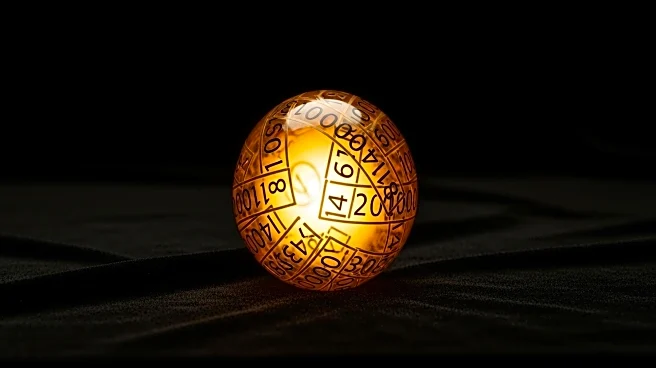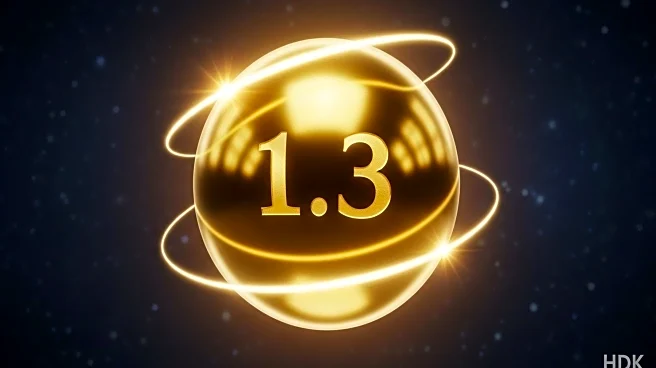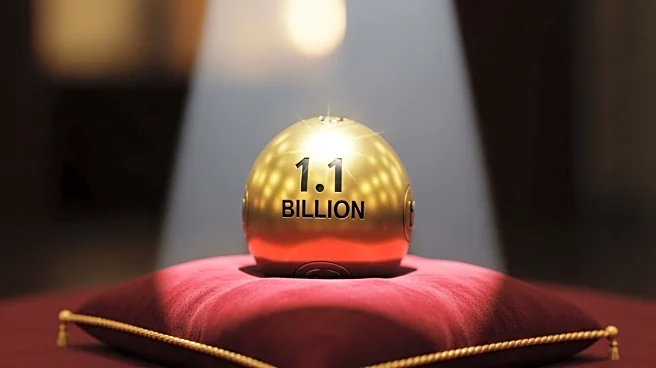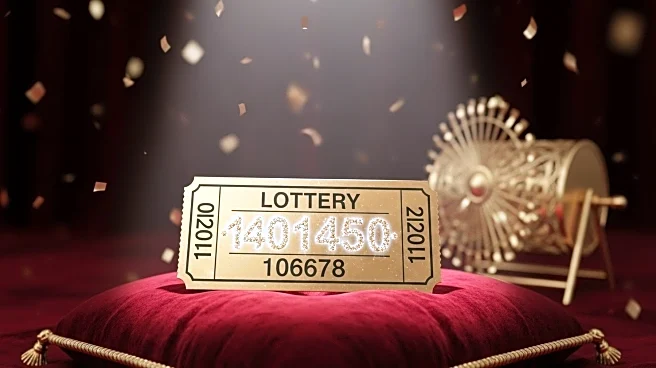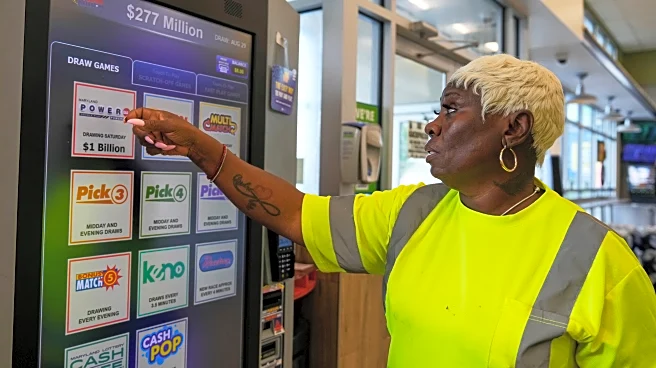What is the story about?
What's Happening?
The Powerball jackpot has increased to $1.3 billion after no ticket matched the winning numbers in the latest drawing. The numbers drawn on Monday night were 8, 23, 25, 40, 53, and 5 as the Powerball. This marks the fifth-largest prize in the history of the game. Despite the lack of a jackpot winner, the drawing did result in two $2 million winners and ten $1 million winners, with notable wins in New Jersey and New York. The next opportunity for players to win the growing jackpot will be on Wednesday night. The odds of winning the jackpot are 1 in 292 million, and winners can choose between a lump sum payment of $589 million before taxes or annuity payments over 30 years.
Why It's Important?
The increasing Powerball jackpot highlights the significant interest and participation in lottery games across the United States. Large jackpots often lead to increased ticket sales, which can result in substantial revenue for state governments that use lottery funds for various public services. The allure of a massive payout can drive economic activity, as individuals purchase tickets in hopes of winning. Additionally, the distribution of smaller prizes to multiple winners can have localized economic impacts, providing financial boosts to individuals and communities. The growing jackpot also underscores the rarity of winning such a large prize, given the challenging odds.
What's Next?
The next Powerball drawing is scheduled for Wednesday night, offering another chance for players to win the $1.3 billion jackpot. As the prize continues to grow, it is likely that ticket sales will increase, further boosting the jackpot amount. State lottery officials will continue to monitor and manage the logistics of the drawing, ensuring transparency and fairness. The anticipation surrounding the drawing may lead to heightened media coverage and public interest, as individuals across the country await the results. If a winner is announced, they will face decisions regarding the payout method and financial planning.
AI Generated Content
Do you find this article useful?




